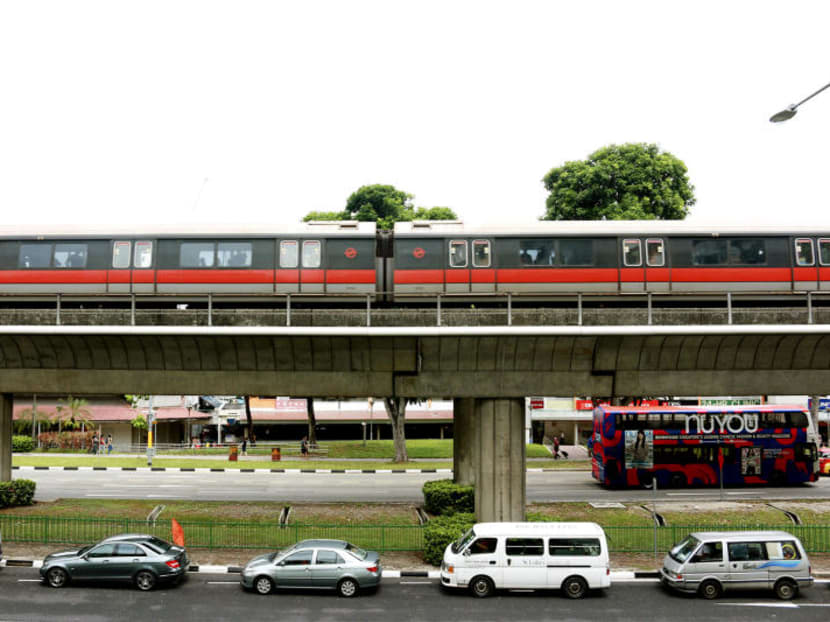Rail network hit by 3 disruptions in a day
SINGAPORE — Commuters were hit by three rail breakdowns at different parts of the island on Friday (Feb 10) — one on the North-South Line (NSL) and two on the Light Rail Transit (LRT) lines — beginning from the morning till late in evening.
SINGAPORE — Commuters were hit by three rail breakdowns at different parts of the island on Friday (Feb 10) — one on the North-South Line (NSL) and two on the Light Rail Transit (LRT) lines — beginning from the morning till late in the evening.
The day began with a disruption on the NSL during the morning rush hour caused by a signalling fault that developed on a train, which was later withdrawn from service.
The fault caused delays for commuters travelling between the Newton and Marina South Pier stations. The faulty train, which was travelling towards Yishun, was pulled from service after passengers alighted at the Raffles Place station, rail operator SMRT said.
In the afternoon, services on the Bukit Panjang LRT were affected by a train fault. SMRT tweeted about the disruption at 3.26pm, saying that free regular bus services were available along the line. Less than 20 minutes later, it said normal train services had resumed, after an earlier tweet said a faulty train was being “recovered”.
In the evening, services on the eastern loop of the Sengkang LRT were interrupted for about 90 minutes, due to a power fault.
Although the NSL disruption was brief, commuters expressed their unhappiness on social media. Twitter user Sharifah Sharomsah complained about being late for work, while another user, Wong Wing Seng, took a jibe at SMRT, saying it “should be in the Guinness Book of Records for the most breakdowns and delays”.
The NSL is due to transit to an upgraded signalling system in stages from next month, allowing trains to run at closer intervals. While the re-signalling works on the trains, stations, depots and the operations control centre were completed last year, the Land Transport Authority previously said it would push back the rollout in order to carry out more than 1,300 tests.
The last high-profile signalling interference reported happened on the Circle Line between August and November last year, which experienced persistent disruptions.
After months of investigation, including military experts being roped in for the probe, the cause was traced to faulty signalling hardware on a “rogue” train, which was later removed.
Commenting on Friday’s signalling fault on the NSL, experts said a single incident should not be interpreted as a sign of a major problem. They added that it was not unusual for trains to be withdrawn from service in order to resolve such faults.
Assistant Professor Raymond Ong, a transport researcher at the National University of Singapore, said it was safer to withdraw a faulty train that has the potential of disrupting an entire system to rectify the fault immediately.
Transport analyst Park Byung Joon said a faulty train has to be pulled from service if the fault is a minor one that can be solved with troubleshooting by a train driver or station staff. Barring a significant breakdown, it can return to service the next day.
“One incident itself should not be interpreted as a sign for major breakdowns,” said Dr Park, an SIM University senior lecturer. He noted that withdrawing troubled trains has become quite common nowadays and this incident pointed to the need to strengthen train maintenance.
Agreeing, railway signalling, control and communications lecturer Andrew Ng from the Singapore Institute of Technology said the withdrawal could be due to faulty onboard equipment.
He pointed out that train withdrawals, which are linked to reliability, should be kept as low as possible. Measures to improve reliability include tightening performance standards and conducting thorough checks on trains before they begin service, he added.









